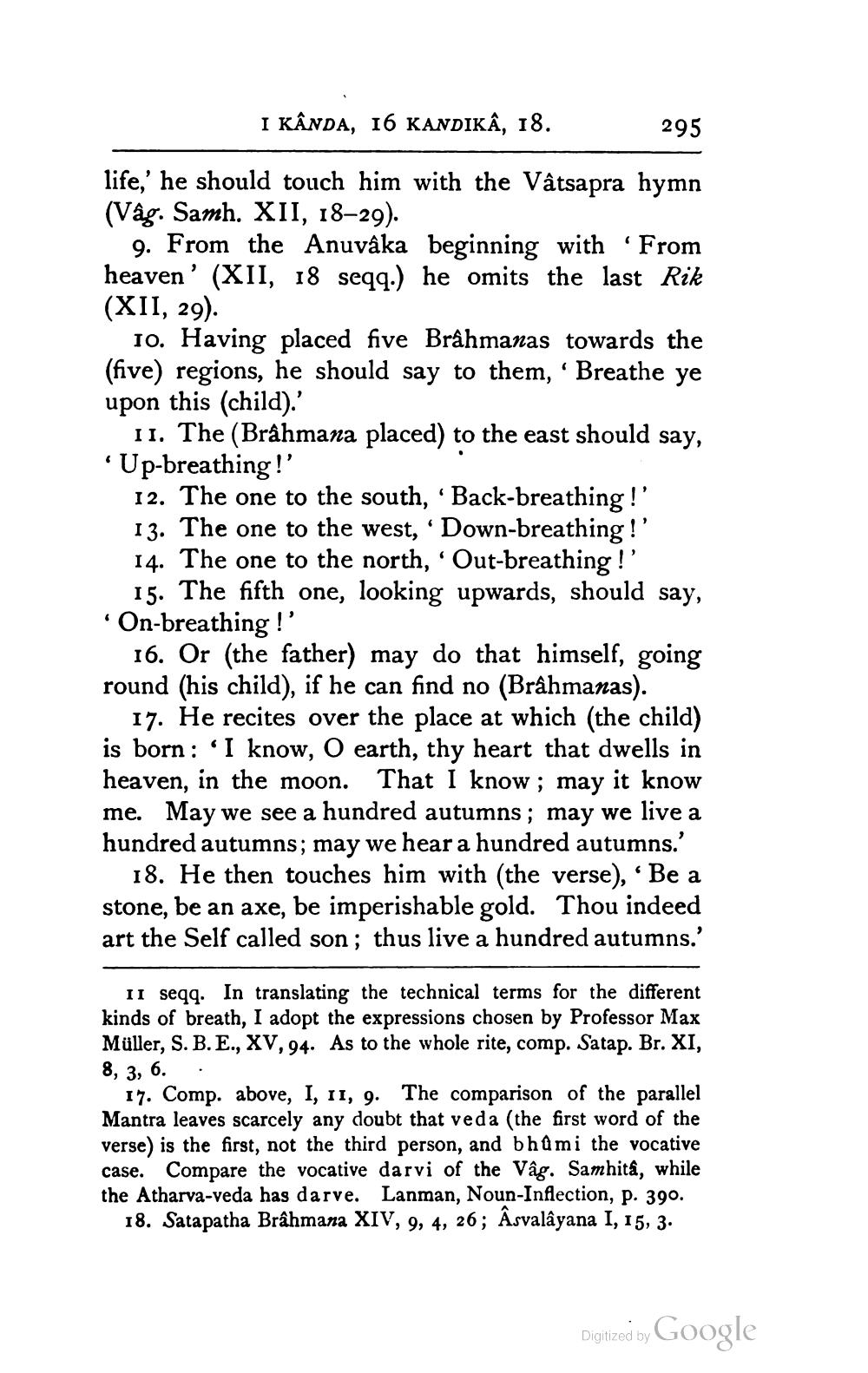________________
I KÂNDA, 16 KANDIKÂ, 18.
295
life,' he should touch him with the Vâtsapra hymn (Vág. Samh. XII, 18–29).
9. From the Anuvâka beginning with ‘From heaven' (XII, 18 seqq.) he omits the last Rik (XII, 29).
10. Having placed five Brâhmanas towards the (five) regions, he should say to them, ' Breathe ye upon this (child).'
11. The (Brahmana placed) to the east should say, • Up-breathing!'
12. The one to the south, 'Back-breathing !' 13. The one to the west, Down-breathing !' 14. The one to the north, Out-breathing !' 15. The fifth one, looking upwards, should say, On-breathing !'
16. Or (the father) may do that himself, going round (his child), if he can find no (Brâhmanas).
17. He recites over the place at which (the child) is born: 'I know, O earth, thy heart that dwells in heaven, in the moon. That I know; may it know me. May we see a hundred autumns; may we live a hundred autumns; may we hear a hundred autumns.'
18. He then touches him with (the verse), · Be a stone, be an axe, be imperishable gold. Thou indeed art the Self called son ; thus live a hundred autumns.'
11 segg. In translating the technical terms for the different kinds of breath, I adopt the expressions chosen by Professor Max Müller, S.B.E., XV, 94. As to the whole rite, comp. Satap. Br. XI, 8, 3, 6. .
17. Comp. above, I, 11, 9. The comparison of the parallel Mantra leaves scarcely any doubt that veda (the first word of the verse) is the first, not the third person, and bhumi the vocative case. Compare the vocative darvi of the Vâg. Samhita, while the Atharva-veda has darve. Lanman, Noun-Inflection, p. 390.
18. Satapatha Brâhmana XIV, 9, 4, 26; Asvalâyana I, 15, 3.
Digitized by Google




